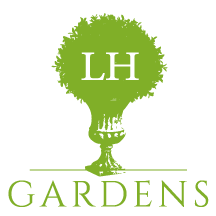Plant of the Week
The Amaryllis! Which is the Hippeastrum! The taxonomy of which you don’t really have to know or care about!
But I like learning a bit as I go, and although I had known there was some minor kerfuffle about what the ‘proper’ name for this beauty is, it was fun to actually get to the bottom of it. Read on, fellow nerds… but remember, this is me, and we won’t go deep into science. The shopping part is coming soon.
In brief, the Amaryllis is a monotypic plant hailing from South Africa.
Unsplash by lynnebeclu
Monotypic means there is only one species in the genus. That is quite unusual (think Aardvarks and Gingko trees). The Amaryllis is not what you get when you shop for the bulbs that get you those beautiful flowers. Botanically, you are enjoying a Hippeastrum, which is a genus with 90 species, and they are native to the Caribbean and Central and South America.
Do you really care? The fact may serve you in some trivial situation (trivial, and about trivia, get it?) but I think we should get back to pretty flowers.
Here is a link to my Amazon storefront, and I have picked out some gorgeous ones for you! They won’t cheer you at Christmas, but hey! January and February could use a splash of color!
Janet Mavec Blog
It was fun to be featured in Janet’s blog this month. She has the most gorgeous jewelry inspired by nature, so Ginny and I posed with her Cicada Wing earrings.
I mean, they would have looked great on Ginny but probably would have gotten caught in her tendrils…
Here is her shop— you can get lovely gold jewelry at the same time you will be sporting leaves, acorns, oysters, seed pods, and of course flowers.
Below are some stunning examples of her work.
AND there are cocktails!
This one is called Roses and Rye
Guest
Ellen Zachos’s defining moment came because of a very boring sandwich. She had her eyes opened to the world of unexpected tastes taken from the wild by a colleague who grabbed a ‘weed’ and immediately improved her American cheese, mayo and white bread by sticking it into the mix.
Since then, the gardener/forager/podcaster/writer/teacher has helped spread the word to so many others, and her answer to my question of why you would even think to do this foraging thing was the best answer possible: to experience tastes that you never would know about otherwise.
It’s not easy, this foraging thing. Knowledge is the most important piece (never, no don’t ever, eat something from the wild unless you are certain it’s okay) and you can learn from Ellen by signing up for one of her courses.
Doesn’t she look like fun?
What the hell will she find in there?
Look at the lovely little starter course (for a lovely little price) that could let you know whether this is for you. And I could see how one could get hooked: it would be so satisfying to commune with nature, poking around your yard to see what is good, understanding more about the plants around you, and eventually aspiring to have a garden like Ellen’s— she has an ornamental garden containing only plants that can spice up her palette. She calls them ‘unbuyable flavors’.
Ellen is a garden writer and presenter, and she and C.L. Fornari have a charming weekly podcast called Plantrama. Their tag line: Science, Art, Dinner.. it’s all in your backyard.
Loved talking to Ellen because her enthusiasm was infectious, her knowledge was vast (quite QUITE important in this field) and, as she says on her web site, '“plants can feed body and soul”.
Garden List of Things
~ How about you put off putting away those hoses and keep watering until we get through this drought around here?
~ How about if you live up north and your haven’t yet, you drain your hoses and cut off your outdoor taps?
~ How about you finish planting those bulbs (talking to myself here) but realize that some of them could go in pots?
So many ways to do that well, and here are some links to some articles that give some good info.
Here’s one from Longfield Gardens
And here’s one from White Flower Farms, the home of the sold out, can’t wait for next year Hot Pants Tulip. Their article is called “it’s easier than you think, and it really is!
must remember to order HotPants early next year!
Lots of ways to do it right, but here are some things to avoid (from personal experience)
Tell Siri to tell you to make sure your pots are not dusty dry if you have them stowed in the garage or shed or some forgettable place. Check them every 3 weeks or so. They don’t want to be wet! Just not dusty dry.
If you have planted them in containers currently outside and planted with pansies or decorated with seasonal greens, maybe you think about whether squirrels will get into them and protect accordingly
Don’t do what I did and not protect tulips planted in pots then sunk in the ground. Read below, and weep a little.
Listen
Handel’s Messiah and you can learn the parts here!
And here’s a local, but not really because it’s virtual (and free) chance to learn about controlling invasive alien plants in winter. Join Blue Ridge PRISM for their 2022 Winter Meeting on January 5th, 11:30 am – 1:00 pm. There will be an update of recent PRISM activities by Rod Walker, Blue Ridge PRISM President followed by your questions to our expert panel on how to control invasive plants during the winter.
Next week, the adorable creature below, the one on the right, will join me as we talk about dogs in the garden. That’s my other sister, Kim.
She does not teach puppies to bite. Quick toy/epidermis swap right after this photo was taken.








